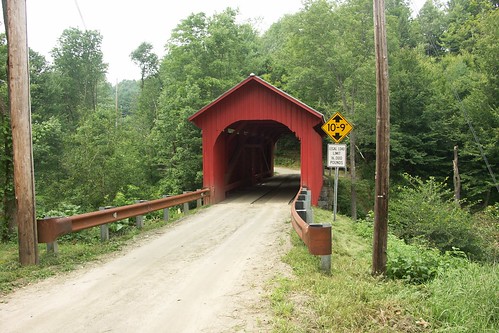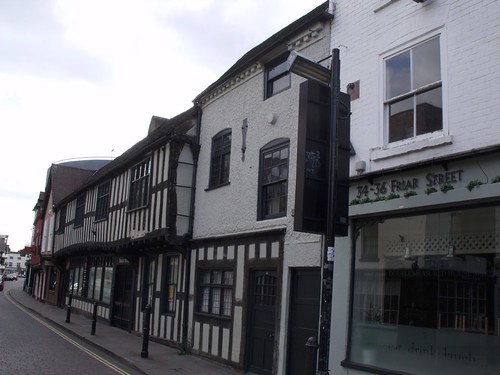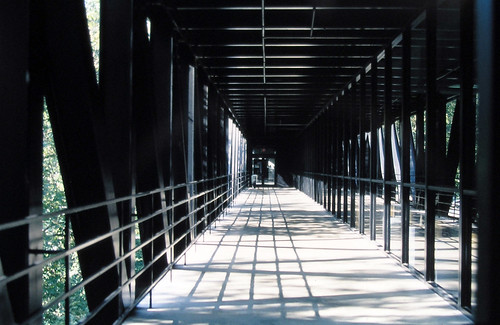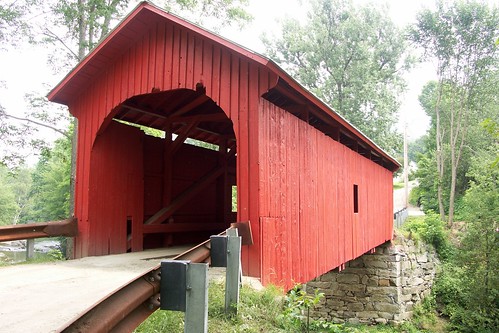Slaughter House Covered Bridge
Image by cmh2315fl
Historic Covered Bridge over the Dog River in Northfield Falls, Vermont. Queenpost Truss design, constructed in 1872.
Slaughter House Covered Bridge
Image by cmh2315fl
Historic Covered Bridge over the Dog River in Northfield Falls, Vermont. Queenpost Truss design, constructed in 1872.
Tudor House, Friar St, Worcester
Image by ell brown
Next to Tudor House is 34 - 36 Friar Street, where you can eat, drink and laugh.
This is wonderful timbered building on Friar Street in Worcester. Rooms inside are 500 years old.
Tudor House
This is the Tudor House Museum, and it is Grade II* listed.
At 38 - 42 Friar Street.
Formerly houses, Cross Keys Tavern from c1765, coffee house c1900-20, now museum. C16, probably c1575-1625. Timber frame with rendered infill; rear wings mostly clad and remodelled in brick in early/mid C18; plain clay tile roofs, 2 large, altered sandstone and brick stacks to rear elevation. PLAN: Front range of 4 bays, sub-divided by party walls which do not respect bay divisions, ground-floor since altered. Outer wings at right angles to main range at rear. C18 carriage-drive inserted to right of centre to access rear. EXTERIOR: 2-storey with attics and cellar. 4 bays of framing, upper floor jettied with mid-rail to close studding; box framing to rest of building. Four first-floor windows, 3 and 4-light mullion and transom leaded-light casements, replacements for earlier oriel windows. C19 shopfront to left ground-floor, two 2/2 sashes to right. North elevation of rear wing to left of passage has arched heads to windows (including early/mid C19 3-light iron casement window in wood frame) and plat bands to first and second-floors; this south wing has exposed timber framing to rear, with central jowled post being all that remains of a C16 workshop range which extended further to rear. INTERIOR: Front range has queen-post roof with clasped purlins and straight wind-braces. 3 open fireplaces with wood bressumers, that to right moulded and probably reset. Ground-floor room to right has mid C18 panelled dado. Ceilings provided to upper floors from outset, with chamfered beam exposed to right; that to left of centre has fine early C17 moulded plaster work, design based on flowing curved ribs enclosing prancing horse, fleur-de-lys and rosette motifs, and central beam with running vine pattern in relief. Mid C18 staircase, quarter-turn with winders and altered with early C20 newel posts, has turned balusters on closed string. Rear wing to north (right) has clasped purlins and queen- post truss, mostly with reused timbers. HISTORICAL NOTE: the rear wings were originally longer and housed loomshops (Hughes). (Buildings of England: Pevsner N: Worcestershire: Harmondsworth: 1968-1985: 334; Worcester Streets: Hughes P and Molyneux N: Friar Street: Worcester: 1984-: 24-27).
Tudor House Museum - Heritage Gateway
craig ellwood, art center college of design, pasadena, california, 1970-1976.
Image by seier+seier
art center college of design, pasadena, california, 1970-1976.
architects: craig ellwood associates, craig ellwood (1921-1992) with james tyler (design), stephen woolley (project architect), and alfred caldwell (landscape design).
structural engineer: norman epstein
in a conversation about st. catherine's college, I learnt from knud holscher that the work of craig ellwood was studied at jacobsen's office around 1960. it should have come as no surprise, ellwood was studied all over the world at the time. by some for his playboy lifestyle which set new standards for architects (the license plates of his ferrari said vroom, his women made men give off similar sounds), by most for the way he made mies easy. he took the high-strung out of mies' steel constructions, made turning corners simple, relaxed plans to make room for the everyday, combined materials freely - all without losing the modernist cool of the case study house program he was associated with.
"relaxed" might not be the right word for the pasadena art center, though. a late work in ellwood's brief career, he retired at 55, it is a true miesian monument, a horisontal adaptation of mies' black steel towers in chicago; a groundscraper, if you like.
the exposed trusses shown here form a bridge which crosses a man-made ravine, all part of the project landscaping by which you arrive at the site driving under the building. a great way to dramatize what is otherwise a quiet monument, but not quite what you sometimes see the art center presented as: a singular, horisontal line of a building, spanning a natural landscape. the ravine simply wasn't there to begin with.
what has recently overshadowed his great buildings has been the disclosure that ellwood the architect never really existed, that he was in some ways as fictional a character as howard roark, only with sounder values. craig ellwood was initially only a company name, four guys back from the war naming their construction start-up after a liquor store across the street from their office. one of the four, jon nelson burke, took the name for himself in 1951 and made a name for himself with it.
burke had the ambition, the entrepreneurship, the taste and charm to become the leader of a successful architect's office, and his personal reinvention, dropping his name and his past, was not all that unusual for california when you think about it. what was unusual was the fact that he was not a trained architect and even if he knew construction well, he relied throughout his career on hired hands to do much of the designing. architecture students at first, trained - and brilliant - architects later.
burke/ellwood represented the company, spent his time on clients and lectures, being hailed as one of america's most significant architects while the actual design work was done anonymously back at the office. to a great many architects, this situation will sound familiar simply because many successful companies are run that way today. we have come a long way from asplund who sat at his desk when his employees arrived in the morning and who signed all drawings personally. ellwood merely arrived early.
the photo is a slide from june 1997. I had some cash from a student competition win, my new girlfriend had a driver's license and a trip down highway 101 was decided. everything was improvised, as it has been ever since when we travel, with only a mental list of coveted buildings to guide us.
Slaughter House Covered Bridge
Image by cmh2315fl
Historic Slaughterhouse Covered Bridge over the Dog River in Northfield Falls, Vermont. Queenpost Truss design, constructed in 1872.
No comments:
Post a Comment